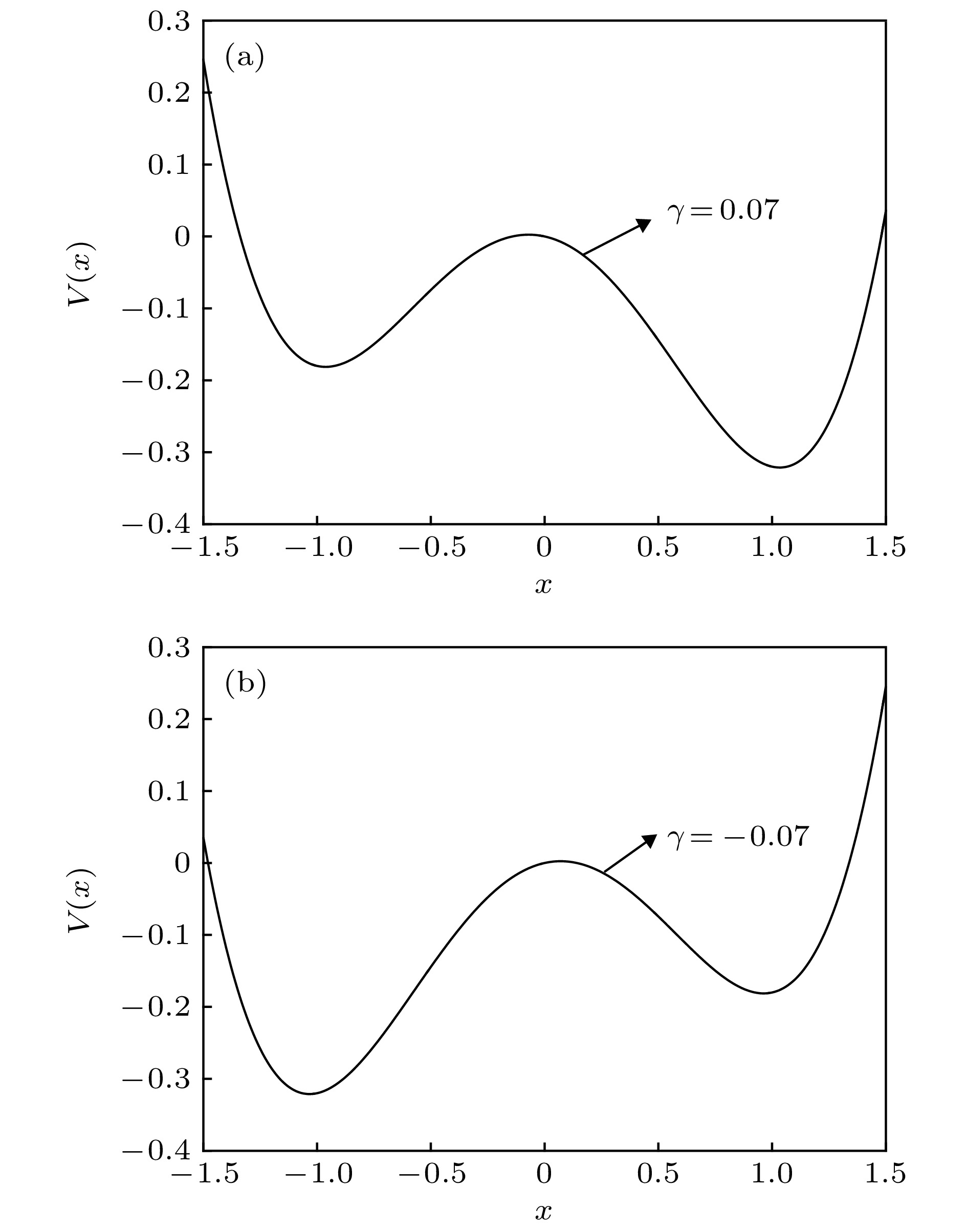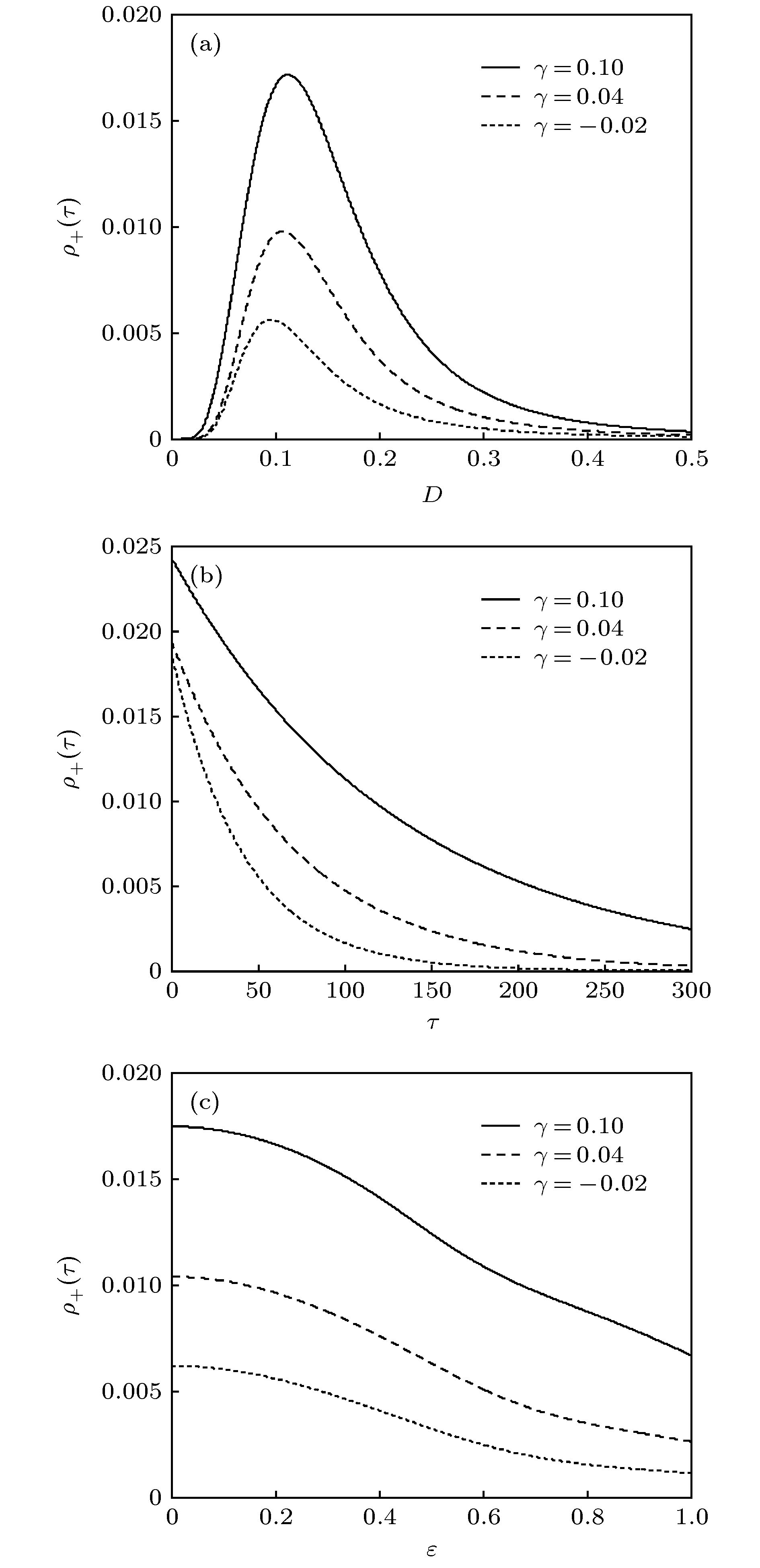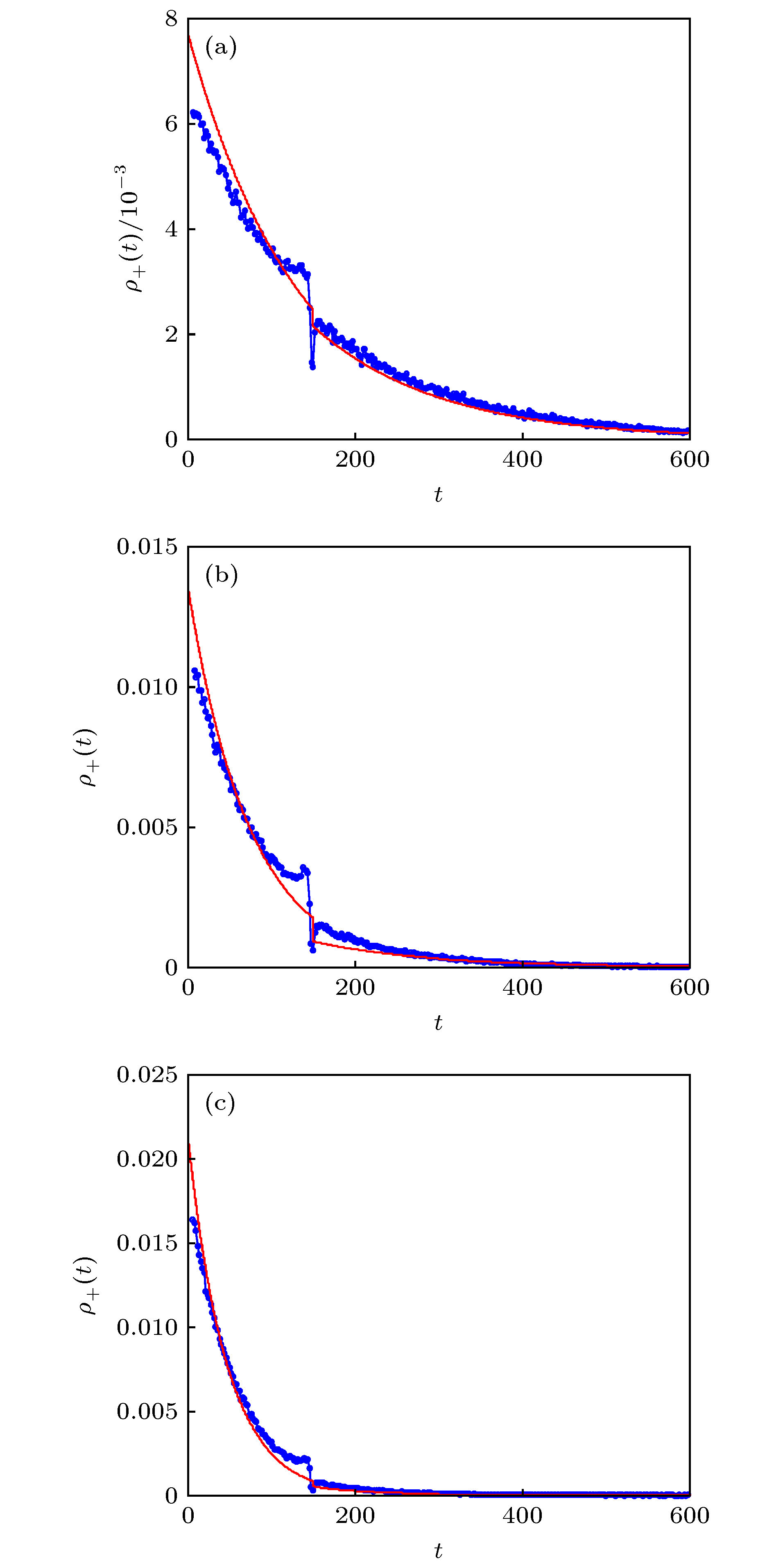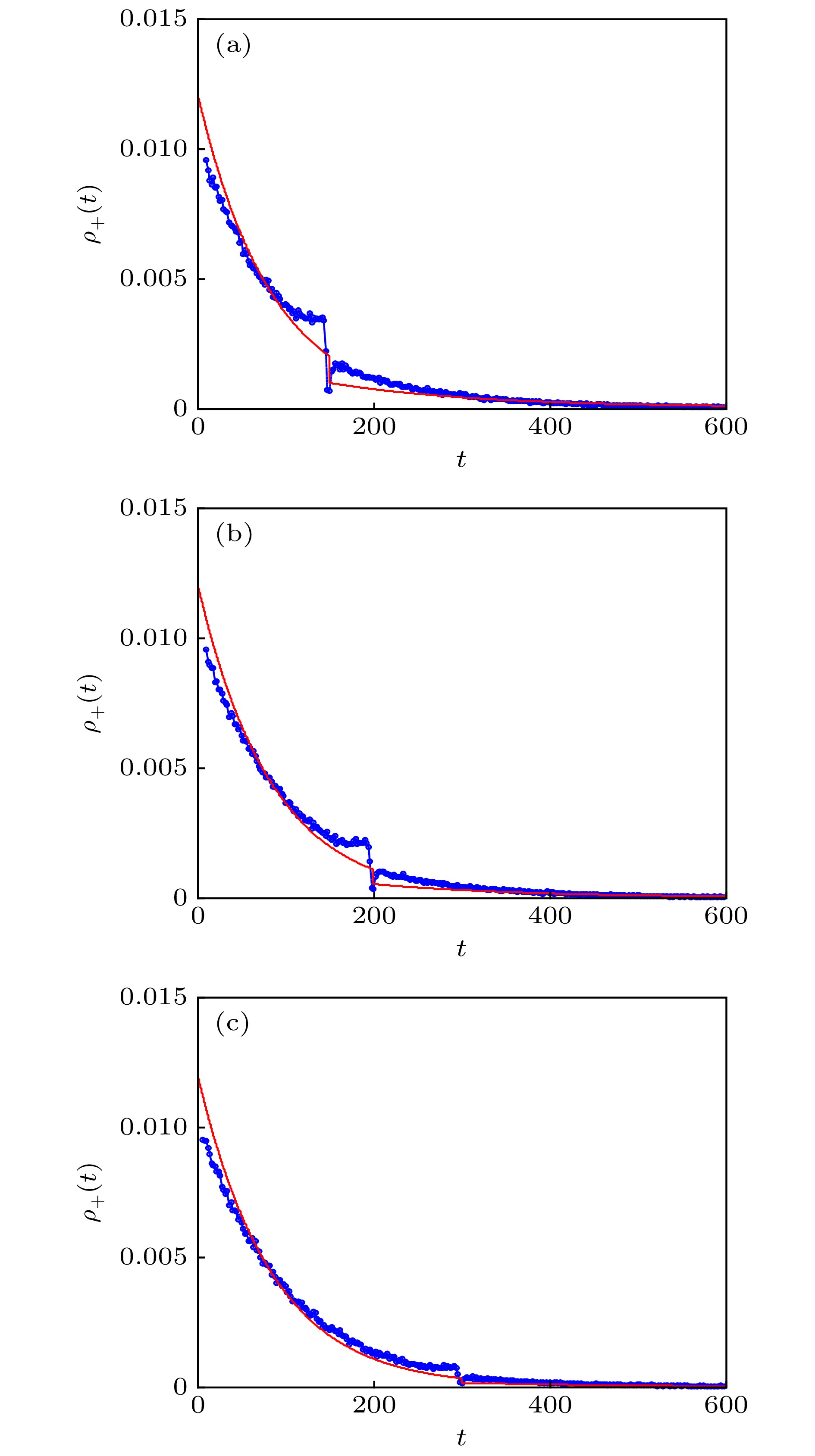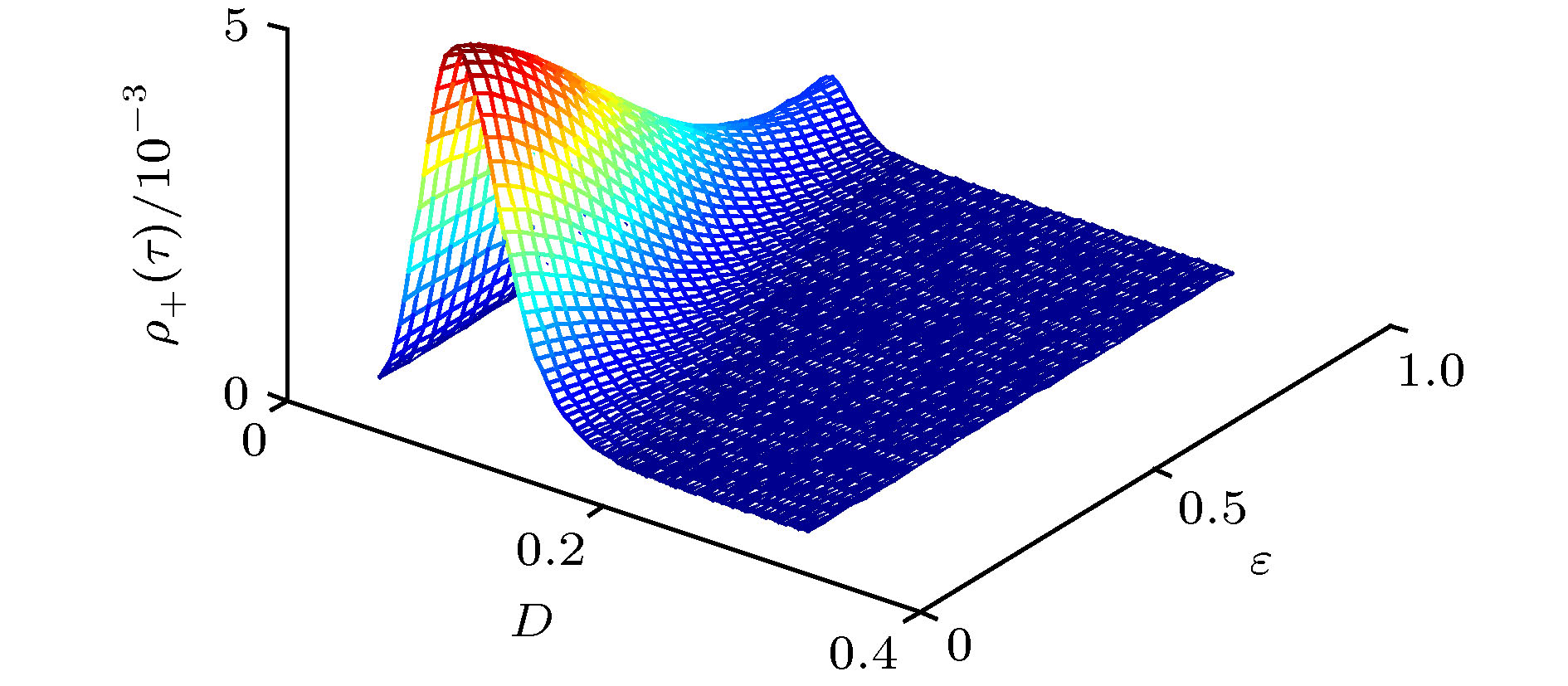-
Residence-times distribution function (RTDF), as a distribution function of times between two consecutive switches in a bistable system, is extensively used to characterize the phenomenon of stochastic resonance (SR). However, most of the studies focus on the symmetric bistable systems. As a matter of fact, the majority of asymmetric systems encountered in nature are more universal and practical. Additionally, due to the combination of diverse propagations or transduction mechanisms, noise recycling, constituted by the superposition of a master noise with a secondary component delayed by a time shift τ, can be generated while a noise is injected into a system and transmitted across the system. Therefore, an asymmetric system subjected to noise recycling is no longer non-Markovian. As a result, it is essential to take the special correlation of noise recycling into account when studying the transition dynamics of particles, which makes it difficult to obtain the analytical formula of RTDF. To solve the above problem, a theoretical method to calculate the RTDF of an asymmetric bistable system driven by noise recycling is put forward in this paper. By using the two-state model with piecewise escape rate, the piecewise escape rate function can be established, based on which the RTDF is derived theoretically with a piecewise formula. It is emphatically demonstrated theoretically and numerically that the RTDF exhibits a feedback-induced structure due to the asymmetry of system. Meanwhile, the effects of relative strength and recycling lag on the structure of RTDF are investigated theoretically and numerically. The results are shown as follows: when the asymmetry satisfies γ > 0 and taking γ as the appropriate values, the RTDF decays exponentially and exhibits a sharp dip at t = τ. Nevertheless, on the contrary, under the condition for γ < 0, the dip at t = τ of RTDF almost disappears and the rate of decay of RTDF turns to increase. When the relative strength and recycling lag take the appropriate values separately, the RTDF displays piecewise exponential decay and declines sharply at t = τ. It is worth noting that the interval between discontinuities becomes smaller, or even disappears with the relative strength and recycling lag increasing separately. Further, the value of RTDF at t = τ presents a maximum value with the noise intensity and the relative strength varying, which illustrates that the noise recycling procedure can play a crucial role in inducing the phenomenon of SR in the asymmetric bistable system.
-
Keywords:
- noise recycling /
- asymmetric bistable system /
- residence-times distribution function /
- stochastic resonance
[1] Benzi R, Sutera A, Vulpiani A 1981 J. Phys. A: Math. Gen. 14 L453
 Google Scholar
Google Scholar
[2] McNamara B, Wiesenfeld K 1989 Phys. Rev. A 39 4854
 Google Scholar
Google Scholar
[3] Tognoni E, Cristoforetti G 2016 Opt. Laser Technol. 79 164
 Google Scholar
Google Scholar
[4] Xu P F, Jin Y F 2018 Physica A 492 1281
 Google Scholar
Google Scholar
[5] Zhang Y X, Jin Y F, Xu P F 2019 Chaos 29 023127
 Google Scholar
Google Scholar
[6] Xu P F, Jin Y F, Zhang Y X 2019 Appl. Math. Comput. 346 352
 Google Scholar
Google Scholar
[7] Tsimring L, Pikovsky A 2001 Phys. Rev. Lett. 87 250602
 Google Scholar
Google Scholar
[8] Yang J H, Sanjuán M A F, Liu H G, Litak G, Li X 2016 Commun. Nonlinear Sci. Numer. Simul. 41 104
 Google Scholar
Google Scholar
[9] Nicolis C, Nicolis G 2017 Phys. Rev. E 95 032219
 Google Scholar
Google Scholar
[10] Gammaitoni L, Marchesoni F, Menichella-Saetta E, Santucci S 1989 Phys. Rev. Lett. 62 349
 Google Scholar
Google Scholar
[11] Werner T M, Kadlec R H 2000 Ecol. Eng. 15 77
 Google Scholar
Google Scholar
[12] Masoller C 2003 Phys. Rev. Lett. 90 020601
 Google Scholar
Google Scholar
[13] Curtin D, Hegarty S, Goulding D, Houlihan J, Busch T, Masoller C, Huyet G 2004 Phys. Rev. E 70 031103
 Google Scholar
Google Scholar
[14] Schnellmann M A, Donat F, Scott S A, et al. 2018 Appl. Energy 216 358
 Google Scholar
Google Scholar
[15] Serres M, Schweich D, Vidal V, et al. 2018 Chem. Eng. Sci. 190 149
 Google Scholar
Google Scholar
[16] Escotet-Espinoza M S, Moghtadernejad S, Oka S, et al. 2019 Powder Technol. 342 744
 Google Scholar
Google Scholar
[17] Borromeo M, Giusepponi S, Marchesoni F 2006 Phys. Rev. E 74 031121
 Google Scholar
Google Scholar
[18] Goulding D, Melnik S, Curtin D, Piwonski T, Houlihan J, Gleeson J, Huyet G 2007 Phys. Rev. E 76 031128
 Google Scholar
Google Scholar
[19] Borromeo M, Marchesoni F 2007 Phys. Rev. E 75 041106
 Google Scholar
Google Scholar
[20] Ma J, Hou Z X, Xin H W 2009 Eur. Phys. J. B 69 101
 Google Scholar
Google Scholar
[21] Ma J, Gao Q Y 2011 Sci. China Chem. 54 1504
 Google Scholar
Google Scholar
[22] Jia Z L, Mei D C 2012 Eur. Phys. J. B 85 139
 Google Scholar
Google Scholar
[23] Sun Z K, Yang X L, Xu W 2012 Phys. Rev. E 85 061125
 Google Scholar
Google Scholar
[24] Sun Z K, Wu Y Z, Du L, Xu W 2016 Nonlinear Dyn. 84 1011
 Google Scholar
Google Scholar
[25] Sun Z K, Yang X L, Xiao Y Z, Xu W 2014 Chaos 24 023126
 Google Scholar
Google Scholar
[26] Zeng C H, Wang H, Qing S, Hu J H, Li K Z 2012 Eur. Phys. J. B 85 347
 Google Scholar
Google Scholar
[27] Chamgoué A C, Yamapi R, Woafo P 2012 Eur. Phys. J. Plus 127 59
 Google Scholar
Google Scholar
[28] Chamgoué A C, Yamapi R, Woafo P 2013 Nonlinear Dyn. 73 2157
 Google Scholar
Google Scholar
[29] Jia Z L, Li K Y, Li C, Yang C Y, Mei D C 2015 Eur. Phys. J. B 88 59
 Google Scholar
Google Scholar
-
图 1 驻留时间分布函数随非对称性
$\gamma $ 的变化(实线是从(25)式中得到的理论结果, 圈线表示数值模拟结果, 且$D = 0.1,\; \varepsilon = 0.5,\; \tau = 100$ ) (a)$\gamma = 0.07$ ; (b)$\gamma = 0$ ; (c) γ = –0.07Figure 1. Variation of residence-times distribution function (RTDF) with the asymmetry (the solid line denotes the theoretical results obtained from Eq. (25), and the circle line represents the numerical simulation results), where
$D = 0.1, \varepsilon = 0.5, \tau = 100$ : (a)$\gamma = 0.07$ ; (b)$\gamma = 0$ ; (c) γ = –0.07图 3
${\rho _ + }\left( \tau \right)$ 分别作为噪声强度D、循环滞后时间$\tau $ 和相关强度$\varepsilon $ 的函数随非对称性$\gamma $ 的变化($\gamma = 0.1,\; \gamma = 0.04,\; \gamma = - 0.02$ ) (a) ε = 0.2, τ = 50; (b) D = 0.1, ε = 0.2; (c) D = 0.1, τ = 50Figure 3. Variation of
${\rho _ + }\left( \tau \right)$ which is a function of noise intensity D, relative strength$\varepsilon $ and recycling lag$\tau $ respectively with the asymmetry$\gamma $ ($\gamma \!= \! 0.1,\; \gamma = 0.04,\; \gamma \! = \! - 0.02$ ): (a)$\varepsilon = 0.2, \; \tau = 50$ ; (b)$D = 0.1, \; \varepsilon = 0.2$ ; (c) D = 0.1, τ = 50图 4 驻留时间分布函数随相关强度
$\varepsilon $ 的变化(实线是从(25)式中得到的理论结果, 圈线表示数值模拟结果, 且$D = 0.1,\; \gamma = 0.1,\; \tau = 150$ ) (a)$\varepsilon = 0.2$ ; (b)$\varepsilon = 0.5$ ; (c)$\varepsilon = 0.7$ Figure 4. Variation of the RTDF with the relative strength ε (the solid line denotes the theoretical results obtained from Eq. (25), and the circle represents the numerical simulation results), where
$D = 0.1,\; \gamma = 0.1,\; \tau = 150$ : (a)$\varepsilon = 0.2$ ; (b)$\varepsilon = 0.5$ ; (c)$\varepsilon = 0.7$ .图 5 驻留时间分布函数随循环滞后时间
$\tau $ 的变化(实线是从(25)式中得到的理论结果, 圈线表示数值模拟结果, 且$D \!= \!0.09,\; \gamma \!= \! 0.08,\; \varepsilon = 0.5$ ) (a)$\tau \!=\! 150$ ; (b)$\tau \!=\! 200$ ; (c)$\tau = 300$ Figure 5. Variation of the RTDF with the recycling lag
$\tau $ (the solid line denotes the theoretical results obtained from Eq. (25), and the circle represents the numerical simulation results), where$D = 0.09, \;\gamma = 0.08,\; \varepsilon = 0.5$ : (a)$\tau = 150$ ; (b)$\tau = 200$ ; (c)$\tau = 300$ .图 6
$ {\rho _ + }\left( \tau \right)$ 随D和$ \varepsilon $ 的变化, 其中$ \gamma = 0.05, \;\tau = 150$ ,$ 0.1 \leqslant \varepsilon \leqslant 1$ ,$ 0.03 \leqslant D \leqslant 0.3$ Figure 6. Variation of
${\rho _ + }\left( \tau \right)$ with D and$\varepsilon $ , where$\gamma = 0.05, \tau = 150$ ,$0.1 \leqslant \varepsilon \leqslant 1$ ,$0.03 \leqslant D \leqslant 0.3$ . -
[1] Benzi R, Sutera A, Vulpiani A 1981 J. Phys. A: Math. Gen. 14 L453
 Google Scholar
Google Scholar
[2] McNamara B, Wiesenfeld K 1989 Phys. Rev. A 39 4854
 Google Scholar
Google Scholar
[3] Tognoni E, Cristoforetti G 2016 Opt. Laser Technol. 79 164
 Google Scholar
Google Scholar
[4] Xu P F, Jin Y F 2018 Physica A 492 1281
 Google Scholar
Google Scholar
[5] Zhang Y X, Jin Y F, Xu P F 2019 Chaos 29 023127
 Google Scholar
Google Scholar
[6] Xu P F, Jin Y F, Zhang Y X 2019 Appl. Math. Comput. 346 352
 Google Scholar
Google Scholar
[7] Tsimring L, Pikovsky A 2001 Phys. Rev. Lett. 87 250602
 Google Scholar
Google Scholar
[8] Yang J H, Sanjuán M A F, Liu H G, Litak G, Li X 2016 Commun. Nonlinear Sci. Numer. Simul. 41 104
 Google Scholar
Google Scholar
[9] Nicolis C, Nicolis G 2017 Phys. Rev. E 95 032219
 Google Scholar
Google Scholar
[10] Gammaitoni L, Marchesoni F, Menichella-Saetta E, Santucci S 1989 Phys. Rev. Lett. 62 349
 Google Scholar
Google Scholar
[11] Werner T M, Kadlec R H 2000 Ecol. Eng. 15 77
 Google Scholar
Google Scholar
[12] Masoller C 2003 Phys. Rev. Lett. 90 020601
 Google Scholar
Google Scholar
[13] Curtin D, Hegarty S, Goulding D, Houlihan J, Busch T, Masoller C, Huyet G 2004 Phys. Rev. E 70 031103
 Google Scholar
Google Scholar
[14] Schnellmann M A, Donat F, Scott S A, et al. 2018 Appl. Energy 216 358
 Google Scholar
Google Scholar
[15] Serres M, Schweich D, Vidal V, et al. 2018 Chem. Eng. Sci. 190 149
 Google Scholar
Google Scholar
[16] Escotet-Espinoza M S, Moghtadernejad S, Oka S, et al. 2019 Powder Technol. 342 744
 Google Scholar
Google Scholar
[17] Borromeo M, Giusepponi S, Marchesoni F 2006 Phys. Rev. E 74 031121
 Google Scholar
Google Scholar
[18] Goulding D, Melnik S, Curtin D, Piwonski T, Houlihan J, Gleeson J, Huyet G 2007 Phys. Rev. E 76 031128
 Google Scholar
Google Scholar
[19] Borromeo M, Marchesoni F 2007 Phys. Rev. E 75 041106
 Google Scholar
Google Scholar
[20] Ma J, Hou Z X, Xin H W 2009 Eur. Phys. J. B 69 101
 Google Scholar
Google Scholar
[21] Ma J, Gao Q Y 2011 Sci. China Chem. 54 1504
 Google Scholar
Google Scholar
[22] Jia Z L, Mei D C 2012 Eur. Phys. J. B 85 139
 Google Scholar
Google Scholar
[23] Sun Z K, Yang X L, Xu W 2012 Phys. Rev. E 85 061125
 Google Scholar
Google Scholar
[24] Sun Z K, Wu Y Z, Du L, Xu W 2016 Nonlinear Dyn. 84 1011
 Google Scholar
Google Scholar
[25] Sun Z K, Yang X L, Xiao Y Z, Xu W 2014 Chaos 24 023126
 Google Scholar
Google Scholar
[26] Zeng C H, Wang H, Qing S, Hu J H, Li K Z 2012 Eur. Phys. J. B 85 347
 Google Scholar
Google Scholar
[27] Chamgoué A C, Yamapi R, Woafo P 2012 Eur. Phys. J. Plus 127 59
 Google Scholar
Google Scholar
[28] Chamgoué A C, Yamapi R, Woafo P 2013 Nonlinear Dyn. 73 2157
 Google Scholar
Google Scholar
[29] Jia Z L, Li K Y, Li C, Yang C Y, Mei D C 2015 Eur. Phys. J. B 88 59
 Google Scholar
Google Scholar
Catalog
Metrics
- Abstract views: 10181
- PDF Downloads: 108
- Cited By: 0














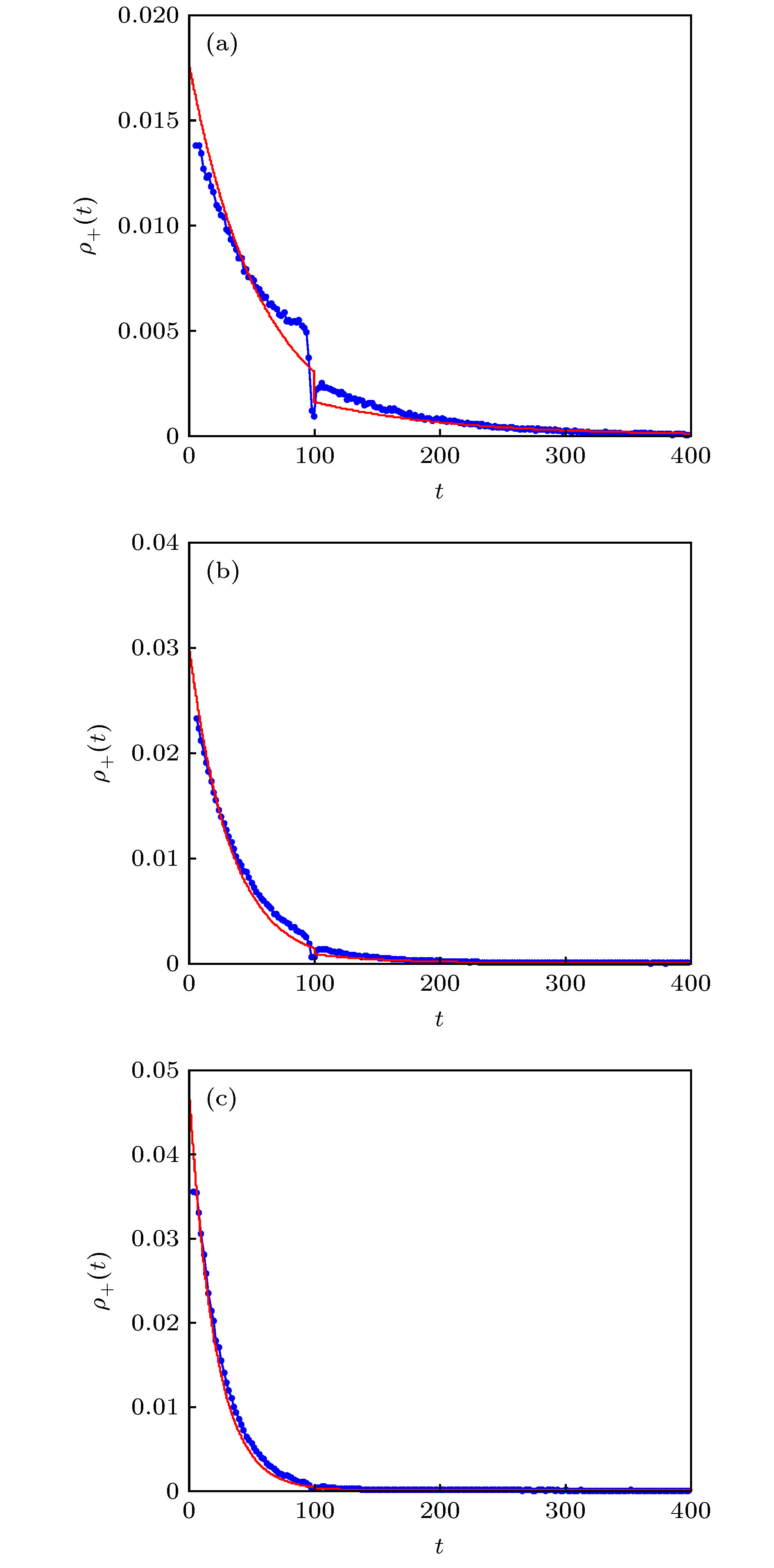







 DownLoad:
DownLoad:
